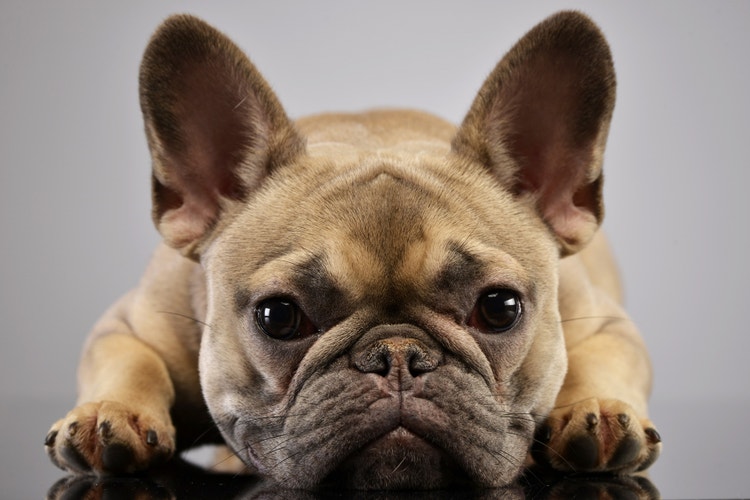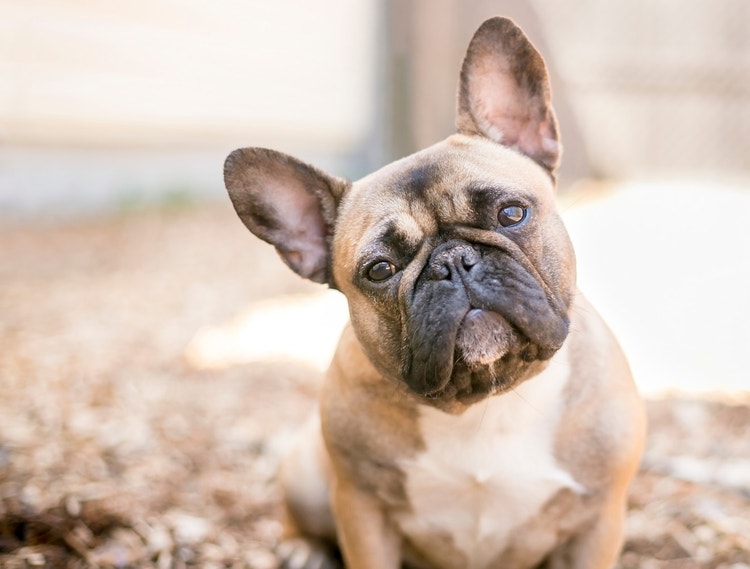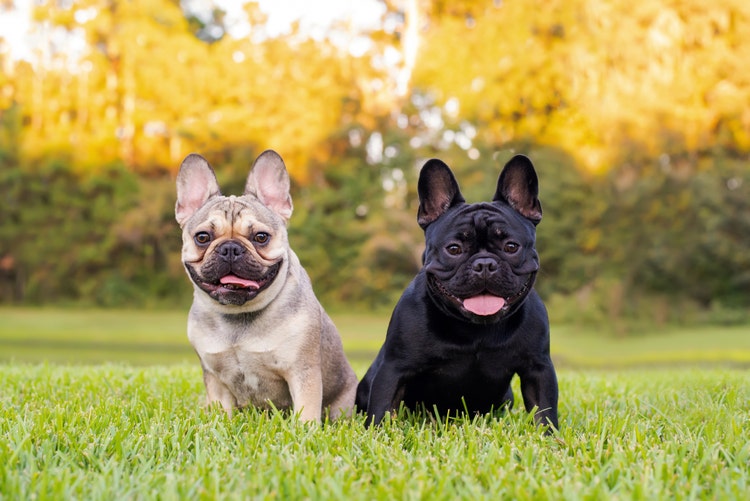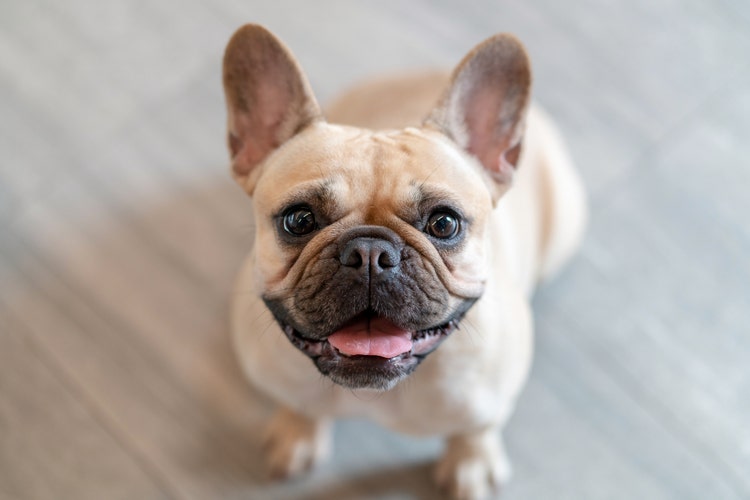
French Bulldog Guide: Behavior, Health, and Care


Where Are French Bulldogs From?
French Bulldogs are, in fact, not French in origin, but British. In the early 1850’s, the bulldog was bred to be smaller and serve primarily as an indoor companion. The English city of Nottingham was the center of the lace making industry and the toy bulldog became the mascot for local lace makers.
Due to the birth of the Industrial Revolution, lacemakers relocated from Nottingham to northern France in search of labor opportunities. They brought their tiny bulldogs with them and introduced this companion to French society. The breed became extremely popular in their new home and were bred deliberately to exaggerate the size of their ears. Over several generations of breeding, these little companions developed a variety of skills, including rat hunting.
In the 1890s, the French Bulldog breed was reviewed for membership in the British Kennel club, but was not recognized as a separate breed until 1906 by the Kennel Club in London, under their official name of Bouledogue Français. The French Bulldog was recognized by the American Kennel Club in 1898.
Caring for a French Bulldog
Do French Bulldogs Have Allergies?
Do French Bulldogs Have Allergies?
French Bulldogs are prone to inflammatory bowel disease and food allergies. They can develop food allergies to dairy products, beef, chicken, lamb, fish, corn, wheat, soy, and a variety of ingredients found in dog food. If your dog has a food allergy, you may notice vomiting, gas, diarrhea, excessive itching, and gastrointestinal distress. Please seek veterinary diagnosis and testing to determine which diet best suits your pet.
How to Groom a French Bulldog
How to Groom a French Bulldog
The coat is short, smooth, and easy to care for, requiring only weekly brushing and bathing. Shedding is moderate at its worst.
Do French Bulldogs Have Health Problems?
Do French Bulldogs Have Health Problems?
Frenchies are a brachycephalic breed and therefore predisposed to a large number of health problems. They are deliberately bred with structural changes to their upper airway to give them a characteristic look. Respiratory issues can range from moderate to severe, and many owners become concerned when they hear their French Bulldog breathing heavily. These issues could be caused by the physical makeup of the dog’s airway, which may be benign, or it could be something more severe, like brachycephalic airway syndrome.
If you are considering the French Bulldog breed, or are already a proud parent, you need to familiarize yourself with their breathing problems and know what to avoid in order to keep your pet healthy. You should also prepare yourself for French Bulldog costs related to treatment.
Brachycephalic breeds are prone to respiratory problems associated with their “smooshed” face, including elongated soft palate, stenotic nares, and everted saccules. They are also prone to gastroesophageal reflux. This breed also suffers from heart disease, joint and spinal issues, and ocular ailments.
Bulldogs are predisposed to: pulmonic stenosis, ventricular septal defect, atopic dermatitis, brachycephalic obstructive airway syndrome, ulcerative colitis, patellar luxation, corneal ulcers, and dystocia.
Can You Train a French Bulldog?
Can You Train a French Bulldog?
French Bulldogs are notoriously stubborn, but quite intelligent. Because of this, they do well with positive reinforcement training that includes large amounts of food rewards, praise, and play. Frenchies need to be socialized with other dogs and people from a young age. For the socialization to be effective, experts recommend introducing your dog to new people and pets by 14 weeks of age.
How Much Should a French Bulldog Exercise?
How Much Should a French Bulldog Exercise?
This breed requires very little exercise and should not be overexerted. A 10 to 15-minute walk each day should be enough to keep your French Bulldog happy and healthy. Due to their brachycephalic conformation, French Bulldogs are prone to overheating and respiratory distress. Brachycephalic breeds should always have access to water and air-conditioning, even in relatively mild temperatures.

Are You Ready to Adopt a French Bulldog?
To adopt a French Bulldog puppy, start by making sure a dog of this size and demeanor will fit your lifestyle. It’s also worth researching French Bulldog price, since this breed commonly ranges between $1,500 to $8,000 in breeder fees.
Use our pet adoption checklist to walk through each step in the adoption process. Complete the necessary adoption applications and be prepared for interviews or home visits. Spend time with potential dogs to find a good match. Finally, prepare your home for the new pet, ensuring it's safe and welcoming.

Pet Insurance Options for a French Bulldog
Pet insurance for a French Bulldog may help cover costs for conditions like allergies and joint issues. Consider a policy that includes hereditary and congenital conditions, flexible coverage options, and reasonable premiums.
Use our insurance aggregator tool to compare providers and find the best plan for your dog's unique needs.
What Are the Traits of a French Bulldog?
French Bulldog Facts
Other Breeds to Explore
References
- Gough, Alex, Alison Thomas, and Dan O’Neill. Breed Predispositions to Disease in Dogs and Cats. John Wiley & Sons, 2018.
- Morris, Desmond. Dogs: The Ultimate Dictionary of Over 1,000 Dog Breeds. Trafalgar Square, 2002.
- American Kennel Club. The Complete Dog Book. Random House Digital, Inc., 2006.
- Ward, Greg. The Rough Guide to the Titanic. Penguin, 2012.
Independent article by PetPlace.com. PetPlace® may be compensated by its affiliates when you click on or make a purchase using the links in this article. PetPlace is a brand of Independence American Holdings Corp. (IAHC).


